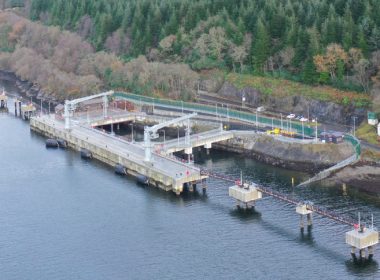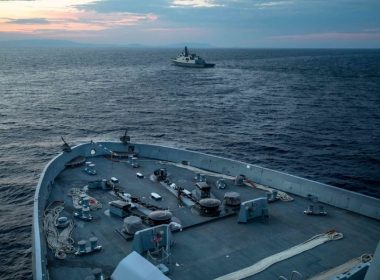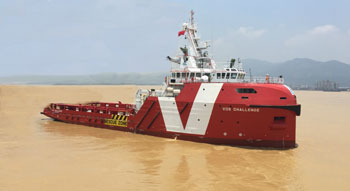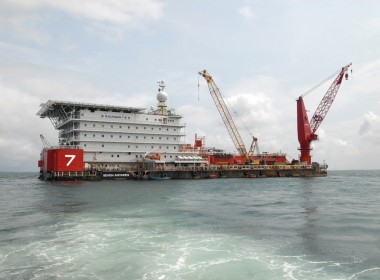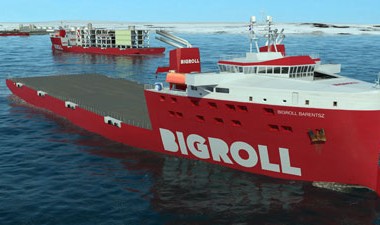OPINION | Strategy must drive the RAN’s surface combatant fleet structure

The structure of the Royal Australian Navy since its inception has been determined by trading off capability, cost, and workforce. Long lamented by naval historians and practitioners alike has been the view that Australia’s maritime strategy, or lack thereof, has been shaped by a continentalist conception of the nation, culturally and strategically. When the average Australian thinks of the military and its sacrifices, they think of Gallipoli or the battles on the Western Front. They don’t tend to think of the loss of HMAS Perth in 1942 with 400 crew in the Sunda Strait some 2,500 kilometres from Darwin, or of the loss HMAS Sydney in 1941 with 645 crew 290 kilometres west-southwest of Carnarvon.
This sea blindness has arguably shaped investment in the RAN and its structure. But it shouldn’t be overlooked or misunderstood that failing to adequately resource the navy could result in the loss of an Anzac-class or a Hobart-class surface combatant—and its crew—within hours of a conflict commencing in the region. That is what “no strategic warning time” means.
So, where are we today? The world has evolved. We increasingly see foreign warships operating aggressively in our region. A war is raging in Europe. Successive Australian defence white papers in the 2000s and the 2020 defence strategic update and force structure plan all recognise the real possibility of conflict. All highlight the strategic importance of the maritime environment to Australia and our increasing reliance on seaborne trade, which equates to about 40 per cent of GDP. That figure grossly undersells the relevance of maritime trade—91 per cent of our oil is imported and we rely on it to keep the country going. Our economy also relies on undersea cables for communications and transactions, including within our banking systems.
And yet, despite our reliance on the maritime environment and the deterioration of regional stability, the answer to most questions about the RAN’s surface fleet structure for over 50 years has been 11 to 12 surface combatants. There was a notable deviation in the 1987 white paper’s recommendation for 16 to 17 surface combatants, but that was never followed through. The only dramatic changes have been the replacement of the Kanimbla-class amphibious transport ships with the Canberra-class landing helicopter docks and the retirement of Australia’s aircraft-carrier aspirations.
The 2023 defence strategic review recommends a strategy for Australia’s defence of deterrence by denial, but what does that mean for a maritime strategy? How does the Australian Defence Force determine what it means for traditional concepts of sea control, sea denial, and power projection?
“Australia’s maritime strategy must include elements of maritime and naval tasking to achieve power projection and elements of sea control along our sea lines of communication.”
The answer is not entirely clear. There are some clues in remarks by government ministers, and if they are interpreted correctly and in context they are alarming. In the wake of the AUKUS partners’ announcement of Australia’s pathway to acquiring nuclear-powered, conventionally armed submarines, Defence Minister Richard Marles said they were a “capability which would give any adversary pause for thought about disrupting the trading routes to Australia and the way in which we connect to the world”.
“The way you need to think about what submarines do is really less about patrolling that massive coastline, which you would need a lot of submarines to do,” Mr Marles also said. “It’s about the question mark that you place in an adversary’s mind.”
While that may be true, the moment deterrence fails (and there’s no guarantee it won’t), we still must be able to protect Australia’s seaborne trade—or, as the late James Goldrick more accurately pointed out, Australia’s seaborne supply. That requires, at least in part, the execution of localised sea control and power projection. While submarines can assist with that function, they can’t achieve the required tasking. Australia’s maritime strategy must include elements of maritime and naval tasking (which are not entirely the same thing) to achieve power projection and elements of sea control along our sea lines of communication. This includes the Coral Sea, the Java Sea where both HMAS Perth and HMAS Canberra were lost in World War II, and even the western India Ocean. Getting there, and providing persistence, will require a reach greater than the 6,000-nautical-mile range of a stereotypical corvette.
As highlighted in the recent call for an overarching strategy addressing maritime security, ensuring maritime security requires the execution of a large spectrum of maritime tasks of which protection of trade is only one. But it’s an important one that requires a significant blue-water capability.
While the dual constraints of cost and workforce will of course prohibit a Mahanian view of “total command of the sea”, a realistic approach is needed to achieve localised sea control and power projection to secure Australia’s seaborne supply. In articulating its maritime domain force structure priorities, the 2023 review states that the navy “must be optimised for operating in Australia’s immediate region and for the security of our sea lines of communication and maritime trade”. It then highlights that, as a consequence, immediate investment priorities for the maritime domain include “the acquisition of a contemporary optimal mix of Tier 1 and Tier 2 surface combatants, consistent with a strategy of a larger number of smaller surface vessels”.
“The discussion about recruitment and retention, while important, won’t address the structural changes required to crew a fleet designed to protect Australia’s national interests.”
There arises the challenge. Be it a consequence of insufficient armament, endurance, flight deck capabilities, speed—the list of comparative metrics goes on—Tier 2 surface combatants (however that designation may be defined) will not be able to meet this tasking. Nor will they be able to complete a number of other tasks required in Australia’s implied maritime strategy.
They will, however, be able to complete many other maritime security tasks currently performed by the patrol boat force. I tend to agree with Rowan Moffitt’s assertion that the 1986 Dibb review intended the Anzac-class frigates to be a Tier 2 capability. The patrol boat’s planned replacement, the offshore patrol vessel, is underarmed and slow for the current context, and Peter Dean makes a valid point that replacing the OPV with a corvette may be beneficial.
But the core of the challenge is that the surface combatant fleet needs to be expanded beyond “the answer is always 12”. How that is to be done is a different question to whether Australia should acquire corvettes or not.
Based on the three-to-one ratio often used to indicate force availability, 12 surface combatants, of which four are likely to be available for operations at any time, can’t provide the degree of localised sea control and power projection required to protect Australia’s sea lines of communication.
This doesn’t mean that the real cost and workforce constraints aren’t important. They are. It does mean that Australia and the ADF must find a way to mitigate these issues. That will require a separate, dedicated discussion.
The ADF must receive more funding if the government intends to meet the challenges set out in the defence strategic review, as discussed in ASPI’s 2023–24 budget brief. This will enable the expansion of the RAN’s surface fleet, among other priorities. And we must think differently about the navy’s workforce challenges. The discussion about recruitment and retention, while important, won’t address the structural changes required to crew a fleet designed to protect Australia’s national interests. The answer to this vexed question may include a coastguard, a naval auxiliary, a system of readiness levels, a rehash of the reserves—the list goes on.
The point is that the answer to the problem of how many surface combatants we need is not perpetually 11 to 12, and difficult choices will need to be made to ensure the required structure is identified, funded, and crewed.


